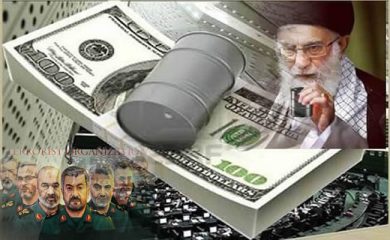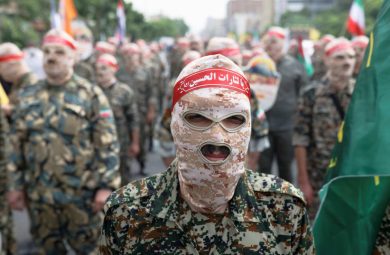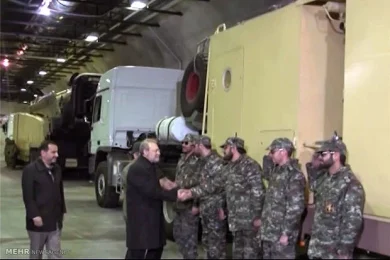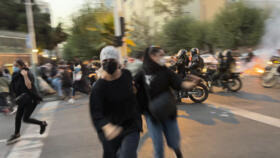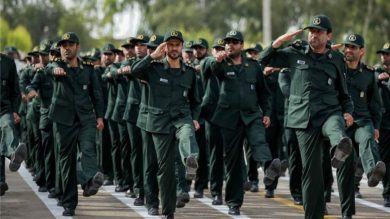The Islamic Revolutionary Guard Corps (IRGC) serves as a cornerstone of the Iranian regime’s apparatus for maintaining power and suppressing dissent. Originally established after the 1979 Islamic Revolution to protect the new government and its revolutionary ideals, the IRGC has since expanded its influence into nearly every facet of Iranian society, including its military, political, and economic structures. However, one of its most significant roles has been enforcing domestic repression through the violent suppression of protests and the systematic targeting of ethnic and religious minorities.
This report provides an in-depth examination of the IRGC’s role in human rights violations, focusing on its methods, the groups it targets, and the broader implications for Iranian society and the international community.
1. The IRGC’s Structure and Domestic Role
A. Mandate to Protect the Regime
. The IRGC is tasked with preserving the Islamic Republic’s ideological foundations and ensuring its survival against internal and external threats.
. Its Basij paramilitary force, a volunteer militia under IRGC command, is instrumental in quelling protests and enforcing ideological conformity.
B. Control Over Domestic Security
. The IRGC operates alongside and often above other security forces, including the Ministry of Intelligence and Security (MOIS), in managing internal dissent.
. Through its extensive intelligence networks, the IRGC monitors political activists, journalists, ethnic minorities, and perceived regime opponents.
2. Suppressing Protests: The IRGC’s Tactics
A. Violent Crackdowns
. Protests in Iran are routinely met with disproportionate force by the IRGC and its Basij units. Key examples include:
. 2009 Green Movement: Following allegations of electoral fraud, nationwide protests were violently suppressed, resulting in dozens of deaths and thousands of arrests.
. November 2019 Fuel Protests: Over 1,500 people were reportedly killed when the IRGC opened fire on protesters across the country, with many victims shot in the head or chest.
. 2022 Mahsa Amini Protests: Sparked by the death of Mahsa Amini in morality police custody, these protests were led primarily by women. The IRGC responded with mass arrests, brutal violence, and internet blackouts.
B. Mass Arrests and Detentions
. The IRGC detains protesters, often without due process, and subjects them to torture and other forms of inhumane treatment in its detention facilities.
. Many detainees are forced to confess to crimes under duress, with these confessions broadcast on state media as part of the regime’s propaganda campaigns.
C. Internet Blackouts and Surveillance
. During protests, the IRGC enforces nationwide internet blackouts to disrupt communication among activists and prevent the global dissemination of evidence of its brutality.
. The IRGC also monitors social media platforms, using advanced surveillance technologies to identify and arrest dissenters.
3. Targeting Minorities
A. Ethnic Minorities
- Kurds:
. Kurdish regions in Iran are heavily militarized, with the IRGC conducting frequent operations to suppress Kurdish political and cultural movements.
. Activists and civilians are often accused of separatism and terrorism, resulting in arbitrary arrests and executions.
2. Baloch:
. The Baloch community faces systemic discrimination and violence. IRGC operations in Sistan and Baluchestan province frequently involve extrajudicial killings and mass detentions.
3. Ahwazi Arabs:
. Ahwazi Arab activists advocating for cultural and linguistic rights are targeted by the IRGC, with many facing torture and execution under charges of “enmity against God.”
B. Religious Minorities
- Baháʼís:
. The IRGC has played a significant role in the persecution of Baháʼís, Iran’s largest non-Muslim religious minority, who face systemic discrimination, property seizures, and imprisonment.
2. Sunni Muslims
. Sunni communities, particularly in Kurdish and Baloch regions, face restrictions on religious practices and targeted harassment by IRGC forces.
C. Women and LGBTQ+ Communities
. Women challenging Iran’s mandatory hijab laws or advocating for gender equality are frequently targeted by the IRGC and its affiliates.
. The IRGC enforces severe penalties on LGBTQ+ individuals, including arrests and torture, under the guise of preserving “Islamic values.”
4. Methods of Repression
A. Propaganda and Disinformation
. The IRGC uses state-controlled media to spread disinformation, delegitimize protests, and justify its violent actions. Activists are often portrayed as foreign agents or terrorists.
B. Fear and Intimidation
. Families of activists are harassed, detained, or threatened, creating a climate of fear that discourages dissent.
. Public executions and televised confessions are used to send a message to the population about the consequences of opposing the regime.
C. Economic Marginalization
. The IRGC imposes economic restrictions on minority regions, depriving them of resources and opportunities, further entrenching poverty and inequality.
5. Global Responses to IRGC Human Rights Violations
A. Sanctions
. The U.S., EU, and other nations have imposed sanctions on IRGC officials and entities involved in human rights abuses.
. Sanctions target the IRGC’s financial networks, reducing its ability to fund repressive activities.
B. International Advocacy
. Human rights organizations like Amnesty International and Human Rights Watch document IRGC abuses, calling for accountability and justice for victims.
. The United Nations has condemned the IRGC’s actions, with special rapporteurs highlighting its role in suppressing dissent and targeting minorities.
C. Support for Activists
. NGOs and foreign governments provide asylum, financial support, and digital tools to Iranian activists and journalists at risk of persecution.
6. Challenges in Addressing IRGC Abuses
A. Lack of Global Consensus
. Countries like China and Russia maintain ties with Iran, undermining international efforts to hold the IRGC accountable.
B. Limited Accountability Mechanisms
. Iran’s refusal to cooperate with international investigations hinders efforts to bring IRGC officials to justice for their crimes.
C. Internet Censorship
. The IRGC’s control over Iran’s internet infrastructure makes it difficult for activists to document and share evidence of abuses.
7. Recommendations for Action
A. Strengthen Sanctions
. Expand targeted sanctions against IRGC officials and entities directly involved in human rights violations.
B. Amplify Activist Voices
. Support independent media and human rights organizations in documenting and exposing IRGC abuses.
C. Provide Digital Freedom Tools
. Equip Iranian activists with tools to bypass censorship and enhance online security.
D. Pursue International Accountability
. Advocate for international investigations into IRGC abuses and explore legal avenues for prosecuting its leaders.
Conclusion
The IRGC’s role in suppressing protests and targeting minorities underscores its function as a tool of repression within Iran. Through violence, intimidation, and systemic discrimination, the IRGC has stifled dissent and marginalized vulnerable communities, perpetuating human rights violations on a massive scale. Addressing these abuses requires coordinated global efforts, including sanctions, advocacy, and support for Iranian activists. Only through sustained international pressure and solidarity with victims can the IRGC’s grip on Iranian society be challenged, paving the way for justice and human rights.
Join Our Newsletter!
Stay informed with the latest updates, news, and ways to take action in the fight for justice and global security. Sign up now to get updates delivered straight to your inbox!

